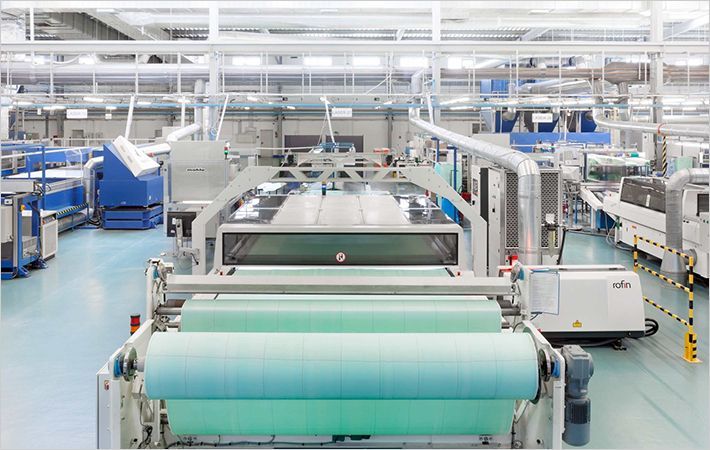Radome E-2C Hawkeye NRL's proprietary phthalonitrile resins, developed by the Chemistry Division, were measured to have dielectric permittivity and loss tangent characteristics that make them ideally suited for use in radomes.
The E-2C Hawkeye aircraft is the U.S. Navy's all-weather, carrier-based tactical battle management airborne early warning, command and control aircraft. The spiral painted on the rotating radome of this Hawkeye is the hallmark of the "Screwtops" of Carrier Airborne Early Warning Squadron 123.
The resin can be used to make composite components by established industrial methods such as resin transfer molding (RTM), resin infusion molding (RIM), filament winding, prepreg consolidation, and potentially by automated composite manufacturing techniques such as automated tape laying and automated fiber placement.
Phthalonitrile-based polymers constitute a class of high temperature thermosets that remain strong at temperatures up to 500 degrees Celsius (C), and that are easily processed into shaped fiber reinforced composite components by low-cost non-autoclave techniques. They are also nearly fireproof.
"The NRL-developed phthalonitrile-based polymeric composites exhibit superior flammability, low water absorption, and high temperature properties that do not exist in the current marketplace," said Teddy Keller, Ph.D., head, NRL Advanced Materials Section.
"The fully cured phthalonitrile does not exhibit a glass transition temperature and can be used for structural applications in oxidizing and thermally hostile environments."
The many attractive features of the phthalonitriles make these resins excellent candidates for numerous marine, aerospace, and domestic settings.
The fire performance of phthalonitrile-carbon and phthalonitrile-glass composites is superior to that of any other thermoset-based composite currently in use for aerospace, ship, and submarine applications, and opens up many more applications than could be realized for other resin systems.
"Furthermore, a low melt viscosity and a larger processing window exhibited exclusively by the new second generation phthalonitrile technology are useful for fabrication of thick composite sections where the melt has to impregnate into thick fiber preforms," Keller said.
NRL's PEEK-like phthalonitrile resins were also measured to have excellent dielectric permittivity and loss tangent characteristics for potential high temperature radomes and other applications requiring radiofrequency transparency.
The ability to cure to a shaped solid or composite below 250 C and the superior physical properties relative to other high temperature polymers such as polyimides enhance the importance of the phthalonitrile system.

